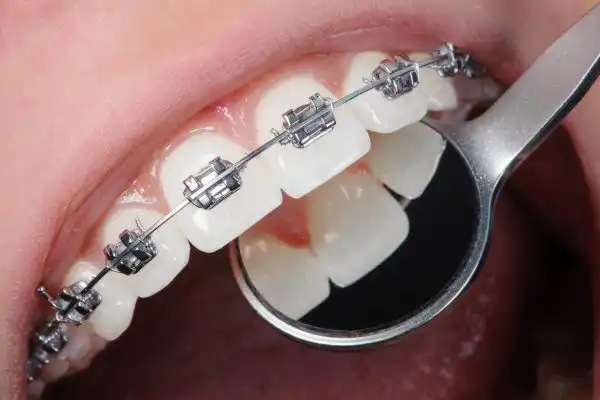Orthodontics
What is Orthodontics?
Orthodontics, the art and science of straightening teeth and aligning jaws, is more than just a branch of dentistry; it’s a confidence booster. It involves the diagnosis, prevention, and treatment of dental and facial irregularities, ensuring not only an aesthetically pleasing smile but also improved oral health.

Orthodontics: Enhancing Smiles, Boosting Confidence
In the pursuit of a perfect smile, orthodontics emerges as a beacon of hope. This comprehensive guide delves into the world of orthodontics, covering everything you need to know about this transformative field of dentistry. It is more than just straightening teeth; it’s about transforming lives. With a commitment to oral health, the expertise of orthodontists, and modern treatment options, achieving the smile of your dreams has never been more attainable.
The Importance of Orthodontics
Orthodontics isn’t merely about aesthetics; it’s about functionality and overall health. Crooked or misaligned teeth can lead to various issues, such as difficulty chewing, speech impediments, and even TMJ disorders. Orthodontic treatment can alleviate these problems and promote a lifetime of oral well-being.
Orthodontics: The Journey to a Beautiful Smile
Initial Assessment: Your orthodontic journey begins with a thorough assessment. Orthodontists use advanced technology like 3D imaging and X-rays to create a personalized treatment plan that addresses your specific needs
Types of Orthodontic Treatments
- Traditional Braces: These time-tested devices use metal brackets and wires to gradually shift teeth into their desired positions.
- Invisible Aligners: Clear aligners offer a discreet way to straighten teeth, perfect for those who prefer a less conspicuous approach.
- Lingual Braces: Placed behind the teeth, lingual braces are virtually invisible and highly effective.
- Orthodontic Surgery: In complex cases, surgical intervention may be necessary to correct jaw alignment.
Orthodontics for All Ages
Orthodontic treatment is not limited to adolescence; adults can benefit too. In fact, an increasing number of adults are seeking orthodontic care to enhance their smiles. It’s never too late to achieve the smile you’ve always dreamed of.
The Orthodontic Process
What to Expect During Treatment
Orthodontic treatment requires patience and dedication. Regular appointments are essential for adjustments and progress monitoring. It’s essential to follow your orthodontist’s instructions diligently.
Dealing with Discomfort
While discomfort is common, it’s usually manageable with over-the-counter pain relievers and orthodontic wax. Remember, the end result is worth the temporary discomfort.
Maintaining Oral Hygiene
Proper oral hygiene is crucial during orthodontic treatment. Special brushes and techniques may be recommended to keep your teeth and braces clean.
Definition of Dental Terminology
Orthodontics
The branch of dentistry that specializes in the diagnosis, prevention, and treatment of dental and facial irregularities, typically involving the use of braces, aligners, and other orthodontic appliances.
Braces
Orthodontic appliances made of brackets, wires, and bands that are used to correct misaligned teeth and bite issues.
Aligners
Clear, removable trays (e.g., Invisalign) used to gradually move teeth into their desired positions.
Malocclusion
A misalignment or improper positioning of the teeth when the jaws are closed, resulting in an imperfect bite.
Overbite
A condition where the upper front teeth excessively overlap the lower front teeth vertically when the jaws are closed.
Underbite:
A condition where the lower front teeth protrude in front of the upper front teeth when the jaws are closed.
Crossbite
A misalignment where some of the upper teeth sit behind the lower teeth when biting down, while others may be in the correct position.
Overjet
Also known as “buck teeth,” it refers to a horizontal gap between the upper and lower front teeth when the jaws are closed.
Impressions
Dental molds or models made by taking an impression of the patient’s teeth, which are used for treatment planning.
Retainer
A removable or fixed orthodontic appliance used after braces or aligner treatment to maintain the corrected tooth positions.
Archwire
A thin wire that connects the brackets on braces and helps guide the movement of teeth during orthodontic treatment.
Elastics (Rubber Bands)
Small elastic bands that are often used with braces to help align the upper and lower teeth and correct bite issues.
Palatal Expander
An orthodontic device used to widen the upper jaw to address crowding or crossbite problems.
Cephalometric X-ray
A type of dental X-ray that provides a detailed view of the head and facial bones, used for treatment planning in orthodontics.
Orthodontic Consultation
An initial appointment with an orthodontist to assess a patient’s dental needs and discuss potential treatment options.
Orthodontic Bands
Metal rings that fit around individual teeth and are used to anchor other orthodontic appliances.
Frequently Asked Questions
Orthodontic treatments may cause some discomfort, but it’s typically mild and temporary. Your orthodontist can provide tips on managing it.
The duration varies depending on the complexity of your case. On average, treatments last between 12 to 24 months.
You’ll need to make some dietary adjustments to protect your braces, but you can still enjoy most foods with caution.
The cost of orthodontic treatment varies, but many orthodontists offer payment plans to make it more affordable.
Yes, a retainer is essential to maintain your newly aligned teeth. Your orthodontist will guide you on retainer use.
Absolutely! Orthodontic treatment can improve the smiles and oral health of adults too.
